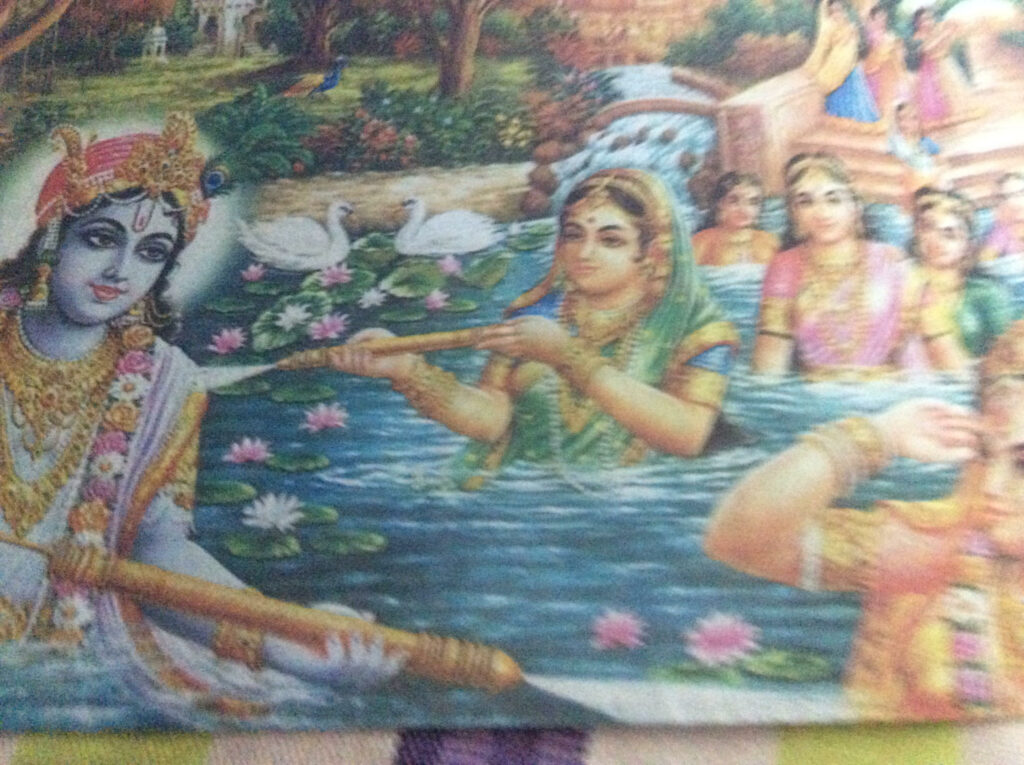HOLI—The Festival of Colours
TRANSCEND MEMBERS, 16 Mar 2020
Dr Ravi P Bhatia – TRANSCEND Media Service
13 Mar 2020 – The festival of Holi is one of the most colourful and joyful festivals of India. It is celebrated in the season of spring that is known as Basant in India. It comes at the end of the winter season — which can be quite cold in North India. Although many countries have four seasons in a year, India has six.
The Festival of Holi or Holi in short is celebrated on the full moon day of Basant (Spring) and has both religious and social significance. For children and young people Holi is doubly joyful.
It is especially significant as the winter crop of wheat is ready to be harvested. A bountiful crop is welcomed with gaiety, joy and dance by farmers. Their joy is transferred to other parts of society. Most people celebrate it with putting gulal and other colours on each other. Even strangers may be seen to follow this custom of putting gulal, throwing water through pitchers on each other. Song and dance and drums are inevitable aspects of this festival. It also promotes unity and partly bridges the caste differences existing in society. Farming involves different castes of people engaged in different aspects — from sowing, watering to cutting the ripe crop of wheat.
It is not surprising that different parts of the country celebrate the festival differently. The festival is celebrated in a unique style in Barsana in the province of Uttar Pradesh on the eastern part of Delhi. Here people gently hit each other on their heads by lathis (sticks). This spectacle is very entertaining to onlookers especially foreigners who come to watch the festival. Even women hit menfolk on their heads by sticks. Some people feel that this is an anti gender phenomenon to offset the victimisation suffered by women in society.
On the night before Holi, we have the custom of burning fires in open areas outside homes. This is based on the myth of the sister of the demon king Hirankashyap, named Holika. Prahlad, the son of the demon king, did not follow his father’s footsteps and was a devotee of Lord Vishnu. When his efforts to make Prahlad follow him failed, Hirankashyap called his sister to burn Prahalad. However, this also did not succeed and as the myth goes it was Holika
13 Mar 2020 – The festival of Holi is one of the most colourful and joyful festivals of India. It is celebrated in the season of spring that is known as Basant in India. It comes at the end of the winter season — which can be quite cold in North India. Although many countries have four seasons in a year, India has six.
The festival of Holi or Holi in short is celebrated on the full moon day of Basant (Spring) and has both religious and social significance. For children and young people Holi is doubly joyful.
It is especially significant as the winter crop of wheat is ready to be harvested. A bountiful crop is welcomed with gaiety, joy and dance by farmers. Their joy is transferred to other parts of society. Most people celebrate it with putting gulal and other colours on each other. Even strangers may be seen to follow this custom of putting gulal, throwing water through pitchers on each other. Song and dance and drums are inevitable aspects of this festival. It also promotes unity and partly bridges the caste differences existing in society. Farming involves different castes of people engaged in different aspects — from sowing, watering to cutting the ripe crop of wheat.
It is not surprising that different parts of the country celebrate the festival differently. The festival is celebrated in a unique style in Barsana in the province of Uttar Pradesh on the eastern part of Delhi. Here people gently hit each other on their heads by lathis (sticks). This spectacle is very entertaining to onlookers especially foreigners who come to watch the festival. Even women hit menfolk on their heads by sticks. Some people feel that this is an anti gender phenomenon to offset the victimisation suffered by women in society.
On the night before Holi, we have the custom of burning fires in open areas outside homes. This is based on the myth of the sister of the demon king Hirankashyap, named Holika. Prahlad, the son of the demon king, did not follow his father’s footsteps and was a devotee of Lord Vishnu. When his efforts to make Prahlad follow him failed, Hirankashyap called his sister to burn Prahalad. However, this also did not succeed and as the myth goes it was Holika herself who was burnt.
The festival has this and other religious overtones including the presence of Lord Krishna in the festivities. A photo below demonstrates the joy of Krishna showering water on the Gopis.
As indicated above, this festival is a symbol of joy, happiness, harmony and peace. It overcomes the hard work put in by farmers and other people before the Basant season.
 ______________________________________________
______________________________________________
Dr Ravi P Bhatia is a member of the TRANSCEND Network for Peace Development Environment, an educationist, Gandhian scholar and peace researcher. Retired professor, Delhi University. His new book, A Garland of Ideas—Gandhian, Religious, Educational, Environmental was published recently in Delhi. ravipbhatia@gmail.com
Tags: Holi, India
This article originally appeared on Transcend Media Service (TMS) on 16 Mar 2020.
Anticopyright: Editorials and articles originated on TMS may be freely reprinted, disseminated, translated and used as background material, provided an acknowledgement and link to the source, TMS: HOLI—The Festival of Colours, is included. Thank you.
If you enjoyed this article, please donate to TMS to join the growing list of TMS Supporters.

This work is licensed under a CC BY-NC 4.0 License.